Water pipe is the central part of communications of any home, since it provides a person with a vital resource. No wonder in antiquity people said that water is more precious than gold. By the way, this phrase appeared in the era of antiquity, and the water pipe is known for the whole world ancient Rome With its sewer and aqueducts still amazing imagination. The principle of water supply was actually original. Despite the fact that many years have passed since then, the water supply device remains in general terms the same.
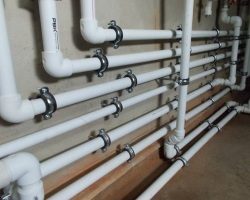 Before proceeding with the choice of pipes and the method of their gasket, it is necessary to make a hydraulic calculation. The purpose of this calculation is to determine the optimal cross section of the laying internal channels, calculate the required consumption of water and its pressure in the system. It can be done in two versions: calibration and concrete. You can download an example of a hydraulic calculation of the water supply system and based on it to make your own, but you can contact professionals.
Before proceeding with the choice of pipes and the method of their gasket, it is necessary to make a hydraulic calculation. The purpose of this calculation is to determine the optimal cross section of the laying internal channels, calculate the required consumption of water and its pressure in the system. It can be done in two versions: calibration and concrete. You can download an example of a hydraulic calculation of the water supply system and based on it to make your own, but you can contact professionals.
The calculation is carried out in several stages:

After you get the calculation and you have executive documentation for water supply and sewage, you can proceed to the selection of water pipes.
The main characteristics of water pipes
 In order to properly equip the water supply system, it is necessary to competently draw up a project and responsibly approach to, which are very different in their main technical and external characteristics. It is necessary to choose the right tubes among all this manifold. It is necessary to determine what tasks they will perform and how will be mounted. It is necessary to plan in advance whether the water supply system will be internal or it is necessary to provide external communications, choose a reducer for water supply and the necessary pumps. If you take care of all the nuances in advance, you can avoid unnecessary spending and errors.
In order to properly equip the water supply system, it is necessary to competently draw up a project and responsibly approach to, which are very different in their main technical and external characteristics. It is necessary to choose the right tubes among all this manifold. It is necessary to determine what tasks they will perform and how will be mounted. It is necessary to plan in advance whether the water supply system will be internal or it is necessary to provide external communications, choose a reducer for water supply and the necessary pumps. If you take care of all the nuances in advance, you can avoid unnecessary spending and errors.
Before switching to the choice of water pipes, you should decide on the type of sewer system.
Depending on the design, they are divided into internal and external. As a rule, in both cases, pipes are used capable of ensuring proper pressure of cold and hot water.
For right choice Water pipes need to pay attention to the following main characteristics:

Types of water pipes
Regardless of whether the water pipe is made from scratch or planned replacement of outdated water supply, it is necessary to determine the material material. A variety of pipes are represented on the roar, which differ in their technical and external characteristics.
According to the material from which they are made, the types of water pipes are divided into several basic groups:
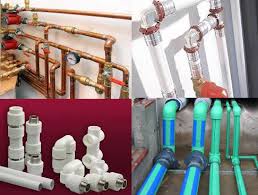
We will examine the types of water pipes and their specifications in order.
Polymer pipes
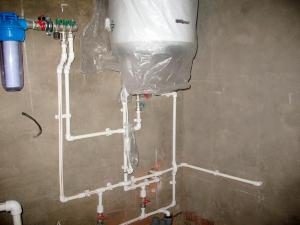 Polymer pipes are the most popular in modern water supply systems. This is due to their high-quality characteristics that ensure their advantages over other types of water pipes. They are well suited, regardless of whether the underground gasket of the water supply is required, the above-ground gasket of the water supply or you equip the air plumbing on your object.
Polymer pipes are the most popular in modern water supply systems. This is due to their high-quality characteristics that ensure their advantages over other types of water pipes. They are well suited, regardless of whether the underground gasket of the water supply is required, the above-ground gasket of the water supply or you equip the air plumbing on your object.
So, plastic pipes possess the following qualities:

Of course, these pipes have disadvantages: 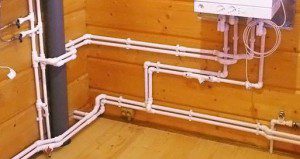
- a special structure that allows oxygen molecules to fall inside the pipe, which affects the quality of operation;
- increased coefficient of increasing pipe when the temperature changes.
Types of plastic pipes
Since this type of pipes are the most common, then manufacturers produce many types of such products, which is distinguished by their properties.
Polymer pipes can be divided into the following types:
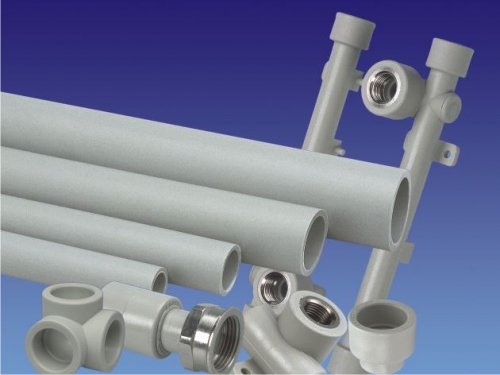
Metal pipeline
 For pipes use three different metal - cast iron, steel and copper. All of them combines high strength, reliability, relatively high price and installation complexity. Before the appearance of polymeric materials, the metal water pipe was the only possible option.
For pipes use three different metal - cast iron, steel and copper. All of them combines high strength, reliability, relatively high price and installation complexity. Before the appearance of polymeric materials, the metal water pipe was the only possible option.
Depending on the metal from which the pipes are made, they are:

Methods of laying water pipes
After the material for the water supply is selected, it is necessary to determine the project and the method of its installation and gasket. A significant role plays the distance between the water supply and water supply in the light, the water supply project depends on this.
Depending on the goals set, the type of house and these conditions it is necessary to draw up a water supply project and the calculation of water consumption, taking into account all points, the analysis and number of sanitary nodes.
It is also necessary to choose the water source, install the pump and plan the type and location of the drainage, for which the check valve is required for the water supply to choose in advance.
 After the streak of the drilling of the well and the installation of the pumping station begins directly the laying of the water supply. If the gasket is used in the land, the low-pressure polyethylene pipes are considered the most suitable for this purpose, which have a diameter from 32 to 40 millimeters. The average depth of the water supply laying for a moderate climate is approximately 1.5-1.7 meters, the distance from the water supply to the foundation does not play a significant role.
After the streak of the drilling of the well and the installation of the pumping station begins directly the laying of the water supply. If the gasket is used in the land, the low-pressure polyethylene pipes are considered the most suitable for this purpose, which have a diameter from 32 to 40 millimeters. The average depth of the water supply laying for a moderate climate is approximately 1.5-1.7 meters, the distance from the water supply to the foundation does not play a significant role.
The water supply of water supply in the ground is carried out exclusively at the plus temperature, at least +10 degrees Celsius. Otherwise, plastic pipes May crack. If the gasket is carried out in winter, heating appliances use.
Laying pipes in Earth can be carried out in one of the following ways:

The essence of the trenchless method is the following steps:
- making microtonnel;
- puncture in the ground;
- horizontal directional drilling;
- melting.
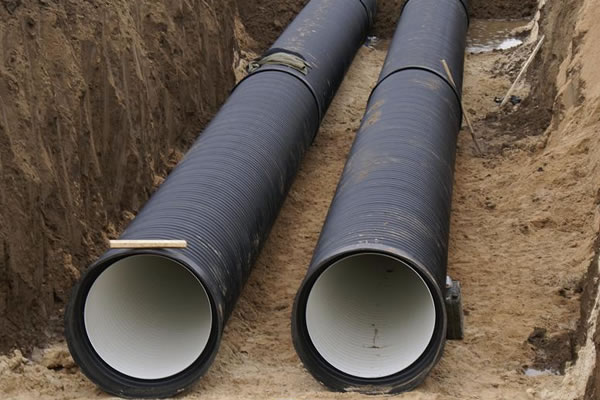 This method is recognized by experts optimal. First of all, the trenchless gasket of the water pipe is good in that simultaneously with the gasket, the destruction of the old water pipeline is also produced. In addition, for this method, you do not need to use heavy equipment, which ensures greater maintenance of the soil, since when working much less vibration. The main disadvantage of the trenchless method is its high cost (Water pipeline SNB - the thing is not checked) and the need to dig a pit.
This method is recognized by experts optimal. First of all, the trenchless gasket of the water pipe is good in that simultaneously with the gasket, the destruction of the old water pipeline is also produced. In addition, for this method, you do not need to use heavy equipment, which ensures greater maintenance of the soil, since when working much less vibration. The main disadvantage of the trenchless method is its high cost (Water pipeline SNB - the thing is not checked) and the need to dig a pit.
There are many ways to lay the pipeline. When choosing one of them, it is necessary to take into account many different factors, such as the quality of the earth, the depth of the investment of the water supply, the presence of a number of structures and old communications.
When building a house there is a lot important momentsthat must be taken into account at the initial stage of construction. This is the home itself, its placement on the plot, the landscape of the site and, of course, water supply and sewage.
For water supply, the main parameter is the water source. What kind of water supply can be country house?
Central water supply
This is the easiest way. If there is a trunk water supply in the village, it suffices to find out the owner of the central water supply, to draw up a contract, to obtain an estimate for work and pay. The rest of the organization will fulfill itself.
But there is here, of course, the disadvantages. Most of these main water pipes were performed long ago. So, the pipes are old, metal, subject to corrosion. As a result, frequent impulse and water shutdowns. In addition, water in a centralized system is usually high with a high content of iron and rust, which means that the presence of a filter for water purification is required. If you agree to put up with these shortcomings, then the water supply of your home is ready.
Autonomous water supply
If these problems you do not need, then the choice is autonomous water supply. In this case, the supply of your home with clean water will depend only on you. It is divided into separate types of water, depending on the source:
- well;
- well.
Water supply from the well - This is the most affordable and cheap way to ensure water. The depth of the well is determined by the level of water occurrence and is usually 10-15 m.
 In addition to the most listed wells, it is necessary to take into account the ease of its construction and maintenance. There are disadvantages:
In addition to the most listed wells, it is necessary to take into account the ease of its construction and maintenance. There are disadvantages:
- Water may contain various impurities and bacteria. Before using the well, it is necessary to carry out bacteriological and chemical analysis of water and install the necessary filters.
- The amount of water obtained from the well is limited, usually about 200 l / h.
- Since you will use the well and winter, it is necessary to build a warmed house to prevent the pumping system freezing.
Well - This is a way to produce water that is the most expensive, as it requires drilling of the Earth. It, in turn, is divided into water supply, depending on the type of well.
Sandy squabble
It has a relatively small depth (about 50 m) and the depth of the aquifer of the aquifer is determined. Such a well can supply water about 1.5 cubic meters per hour. This quantity is enough to water a small country house. Of course, in this case, water quality is much better, but the analysis is still necessary, since surface waters can enter the aquifer.
In the well, it is necessary to install a strainer for water purification from sand, all sorts of solid impurities. The filter must be periodically cleaned.
Artesian well
 Considering the types of water supply, you need to mention the best, but at the same time the most expensive method of water supply of a country house. In this case, the water fence is carried out from the limestone layer. Its depth can reach several hundred meters. The artesian well can give water more than 10 cubic meters hourly. Such a quantity is enough to water a few cottages.
Considering the types of water supply, you need to mention the best, but at the same time the most expensive method of water supply of a country house. In this case, the water fence is carried out from the limestone layer. Its depth can reach several hundred meters. The artesian well can give water more than 10 cubic meters hourly. Such a quantity is enough to water a few cottages.
In addition, this water usually does not need pre-clean. The Artesian Well has a sufficiently long service life - 15-30 years. In the process of operation, as a rule, there is no problem with it.
However, water in aquiferous limestone horizons is the ownership of the state, so before drilling the well, it is necessary to obtain an appropriate permission.
All existing water supply systems can be divided into two types: water supply is centralized and autonomous.
Autonomous types of water supply provide water with a small amount of consumers and are intended only for private use. The autonomous (individual) water supply includes a water pipe using a membrane tank, which is called a hydroaccumulator, and a water supply with a cumulative tank.
Video Review - Pumping equipment for autonomous water supply
The centralized water supply system is used to provide water to the large circle of consumers. In this case, all the users of the water supply are connected to single source of water supply. Often, a centralized type is used in urban-type settlements and other densely populated points. but central system The water supply can also be in some villages, villages and cottage settlements, but such a phenomenon is quite rare. In the absence of connection to this type of water supply, it is necessary to arrange independently autonomous system Water supply of your country house. The principle of their work is as follows:
- Autonomous (individual) water supply
- Autonomous types of water supply are quite widely used in the construction of cottages, cottages and country houses.
- The pre-made well or the dumped well is equipped with a submersible pump, to which the pipeline system is later connected.
- The pipeline is paved and start in a residential premises.
- Next, the pipeline system is connected to a water purifier filter, an automatic relay and a hydroaccumulator.
All this equipment is called a system responsible for water supply. From this system, the pipeline in the future distributes purified water in consumer (folding) points.
Thanks by cutting into a hydroaccumulator The system provides constant water pressure on the desired level Even at the time when the power supply is disabled.
Water supply with accumulative tank installation

In places with constant voltage drops in the power grid, it is customary to use the types of water supply using the accumulative tank. The principle of operation of such a water supply system is as follows:
- At a high level in a private house (often in the attic) install cumulative Buck which is equipped with a float valve.
- The pipeline is connected to the submersible pump, which is installed in the well or well and after starting in the housing.
- In the house, the pipeline is supplied and connected to the bottom of the tank.
- Using the pump, water is injected into the cumulative tank and when the maximum filling is reached, the pump automatically stops its operation.
- When water reaches the minimum level, the valve is triggered and the pump is re-turned on.
- Centralized water supply
The central water supply system is a system in which water enters the total distribution network From several sources (less often from one). In this case, the provision of a group of consumers by obtaining water comes from one plumbing network. Clear, water intake and water supply facilities perform water supply to consumers who are in the zone of their action. Their work occurs in advance agreed graphics.

The central water supply systems have several types that differ from each other depending on the type of object:
- industrial;
- urban;
- towns.
Centralized systems can be divided into the following types of water supply: industrial, fire-fighting and drinking. Centralized water supply can be separate, combined and incomplete.




